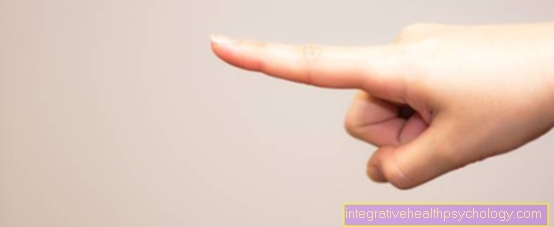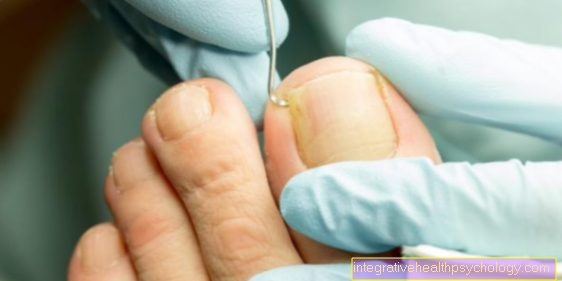glasses
Synonyms
The name glasses comes from the late Middle High German word "berille ", which in turn is derived from the word "beryl“Derives. These are the 1300 cut semi-precious stones used; Rock crystals mostly called beryl.
Names such as "nose bike" or "eye glasses" are used as slang synonyms.
definition
The glasses are an aid for the correction of ametropia. It is also used to protect the eye from injury (Welding goggles, Motorcycle goggles, Cycling glasses), Overstimulation (diving goggles, sunglasses, snow and ski goggles) and also in the diagnostic and experimental area (Frenzel glasses, polarization glasses, red-green glasses / red-green weakness, binocular functions, shutter glasses).
It usually consists of a solid frame or frame and two glasses set in it, specially cut and processed for the purpose, which are referred to as lenses if they have refractive properties.
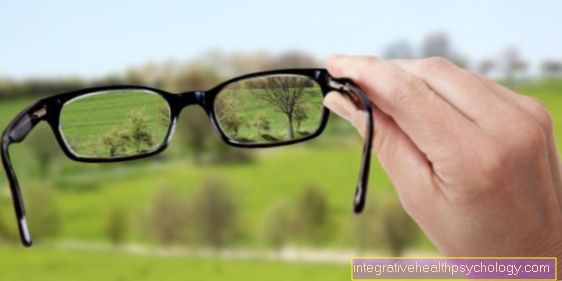
Epidemiology
According to a study by the Allensbach Institute for Demoscopy on behalf of Kuratorium Gutes S.marry (KGS) in Berlin today wear more than 60 percent glasses in Germany. While it was only 43 percent of the population at the time of the first survey in 1952, the number of people wearing glasses in the age group from 21 to 29 has increased significantly to this day. Every fourth person in this age range wears glasses today. The reasons for this are to be found in the intensive use of computers or cell phones, which makes poor eyesight manifest earlier. But more widespread acceptance and the reduction of prejudices have also ensured that the glasses It has not only served a therapeutic purpose for a long time, but has also become a permanent symbol of status and style. After a survey of 3,600 people aged 16 and over, 40 percent of those questioned said that glasses "underline their own personality" or "make many people more interesting".
history
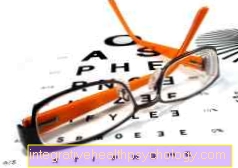
Glasses were invented in Italy around the end of the 13th century. The roots of the glasses can be traced back to ancient times. The mathematician and physicist Archimedes (287-212 BC Chr.) He invented the burning mirror with which, according to legends, he is said to have set Roman ships on fire. But even the ancient Greeks made around 2000 BC. Polished hemispheres made of quartz or glass, with which letters could be enlarged, but which were only used as jewelry for swords, sceptres and clothing.
The great moment of optics struck for the first time around 1240, when the work of the Arabic mathematician and astronomer Ibn al-Haitam (965-1039) was translated into Latin. His "treasure of optics", which deals with the teachings of seeing, refraction (refraction) and the light reflection (reflection), was from now on available in monastery libraries. His idea of supporting the eye by means of an optical, ground lens was groundbreaking.
In a monastery, the first “reading stone” was then probably cut by monks and used to correct presbyopia. Reading glasses and glasses did not follow until the second half of the 13th century. The oldest representation of glasses is on a portrait of Tomasco di Modena. It was created around 1352 and shows Cardinal Hugo de Province with his riveted glasses (glasses made of iron, wood or horn that did not have a head attachment and were simply held in front of the eyes).
Around the second half of the 14th century, glasses underwent the first technical renewal and temple glasses were created. For this purpose, two mounted glasses were connected by a bow or bow made of wood, iron, bronze, leather, bone, horn or whalebone and provided with an eyelet in the middle, which gave space for a chain that should prevent the glasses from falling. The slits made the bridge more elastic and the glasses sat better on the nose.
In the centuries that followed, newer and more comfortable ideas began to emerge. Women in the 15th to 18th centuries in particular used their own special type of visual aid - the so-called cap glasses (also forehead extension glasses). With an auxiliary construction, it could easily be attached to a low-lying cap.
Around the same time, the monocle experienced an upswing. Its practical use was recognized as early as the 14th century, but especially in the 18th century the fashionable trend followed, which continued into the bourgeoisie. The round single reading glass was clamped between the cheek and upper eyelid in front of the eye and attached to a chain could quickly be stowed in the vest pocket.
About inventions like that Forehead glasseswith the glasses hanging from a metal hoop attached to the forehead, the Joint glasses, a further development of the rivet glasses with a hinge joint, the Pince-nez, in which two glasses were connected to each other with a spring clip made of iron or copper and clamped onto the nose contributed to a better view Thread glasses, in which the extreme pressure of the pince-nez on the nose was reduced by tying a thread around the ears and thus getting a secure hold without the painful bridge of the nose, the invention of the Ear glasses. Laterally attached bars gave it the name "temple glasses". These achieved a more optimal fit thanks to a metal ring attached to the end.
All in all, it took 500 years to develop glasses that could be attached behind the ears. Even nowadays, more and more new innovations increase the wearing comfort. New materials (plastics in the frame industry, light metals such as titanium) minimized the weight of the glasses to less than 15 grams.
Causes and symptoms for the therapeutic use of glasses
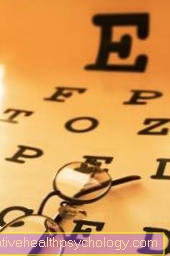
The most common use for glasses is to correct a Ametropia (Ametropy) due to a refractive error (Refraction anomaly) of the eye. The cause is either the abnormal length of the eyeball (so-called Axial ametropy) for short or Farsightedness, as well as presbyopia or, more rarely, with abnormal refractive power of the cornea or lens (so-called refractive ametropia).
In the myopia (Myopia) the eyeball is too long compared to the refractive power of the lens. Light rays arriving in parallel are in front of the Retina (retina) and a blurred image is produced.Those affected can only see objects in the distance to a limited extent or are blurred ("blurred").
In contrast, the Farsightedness (Hyperopia) the eyeball Too short compared to the lens power and the image of incoming light rays is displayed behind the retina. Close objects e.g. the letters in a newspaper are blurred. The Presbyopia (Presbyopia). With increasing age, the eye lens loses its elasticity. Here, too, the consequences are the blurred image of nearby objects.
In addition to the ametropia of the eye, various incidents that lead to the loss of the lens (e.g. due to accidents) can be an indication for glasses.
diagnosis
Usually one will glasses prescribed by an ophthalmologist through an eyeglass prescription. Either the same or an optician will then lead one Eye test with the patient. First, a purely geometrical-optical measurement of the eyes takes place. To do this, the patient sees through what is known as an automatic refractometer. The result indicates whether glasses are needed. This objective test is followed by the subjective eye test. Together with the patient, the strength of the glasses is determined by reading numbers or pictures from an eye test chart. The left and right eye are set separately and optimally matched to each other.
The respective glasses strength is given in diopter (Abbreviation: dpt). The information for nearsightedness is given a minus sign, for farsightedness a plus sign.
A so-called cylinder can also be determined in an eye test. He corrects the vision e.g. at Astigmatism in a certain level.
therapy

Pure farsightedness, presbyopia and myopia are treated conservatively with single vision glasses. For this purpose, both forms of farsightedness are corrected with a convex (raised on both sides) converging lens - reading glasses. Myopia, on the other hand, is treated with a concave (hollow surface on both sides) diverging lens - distance glasses.
If both the letters in the newspaper and the objects in the distance are blurred, there are so-called varifocals that provide seamless correction for all areas between distance and near.
The formation of a corneal cone or irregular corneal curvature can only be inadequately corrected with glasses.
Glasses must always be correctly adjusted, otherwise health problems can arise or the person concerned cannot see fully despite the correct strength of the glasses.
Ametropia can also be treated surgically using various techniques (e.g. laser therapy).
rehabilitation
A glasses is only used to relieve symptoms, i.e. it enables the person affected to see normally again or optimally for his illness. Although the eyesight can regress over time, chances of recovery are usually not to be expected when wearing glasses.
prophylaxis
There is no clear precaution to avoid ametropia. Excessive use of televisions and computers is discouraged. People who still have to work with a PC in their job are advised to have a regular check-up. Certain guidelines exist for the same professional groups. In addition, should eye drop the Dehydration of the eyes and prevent overexertion.
Summary
All in all, glasses are probably the most useful tool for patients with low vision. Even if they are sometimes used in everyday life (e.g. Sports), the constant further development ensures optimal wearing comfort.






















